IWASHIMIZU HACHIMANGU | historical places to visit
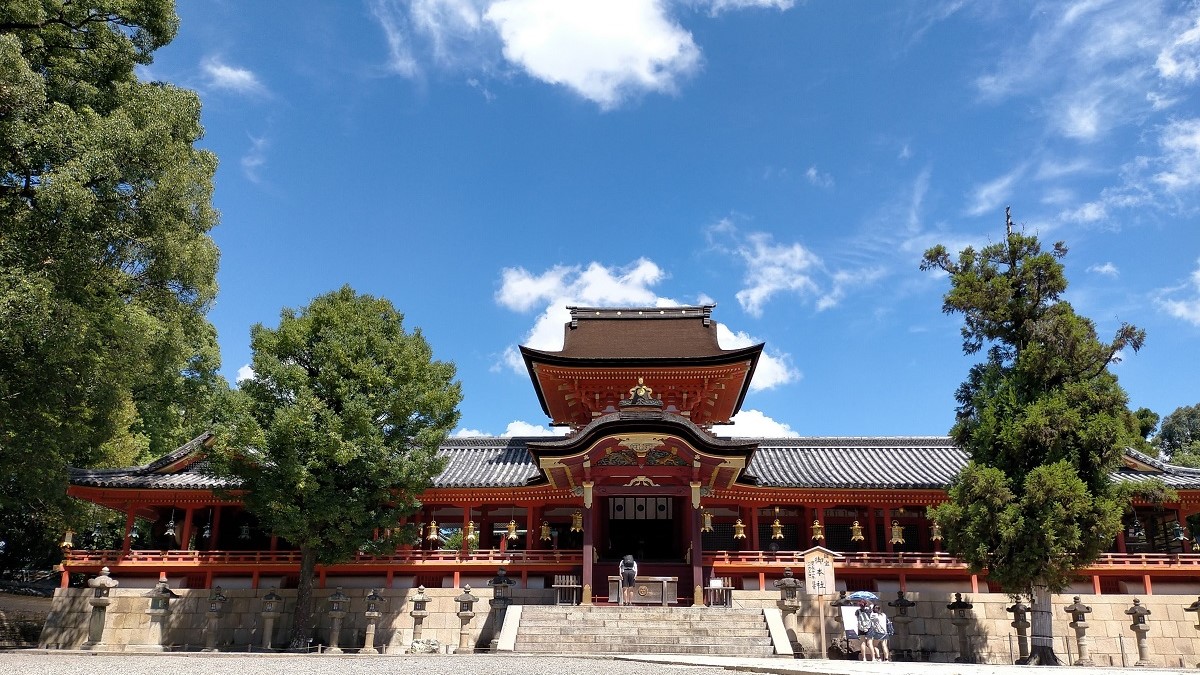
Iwashimizu hachimangu is a shrine placed on the top of Mt. Otoko. It’s in south kyoto. The shrine was built in 859. It’s the oldest hachimangu. The origin of the shrine is that Gyokyo buddhist priest received a message from God to build shrine and he was leaded by a pigeon to Mt. Otoko. The shrine has built, and it has been admired since that time.
When did it built?
In 859, Gyokyo buddhist priest was leaded to Mt. Otoko. After that, Seiwa emperor build the shrine on Mt. Otoko. It takes Hachiman-Zukuri which is a style that sacred place and front shrine are separated. It has reconstructed repeatedly until 1634 and it’s known as the shrine that is one of the largest and oldest. The shrine worships God of military so that the shrine has evaluated as same as Ise shrine especially for samurai.
Where to see?
- The 1st Torii gate

There are 3 torii gates in the Iwashimizu hachimangu. 1st Torii gate which is the closest to the station is the gateway to sacred shrine. There is a board on the center of the Torii, 2 pigeons are facing each other on it.
- The pathway to the shrine
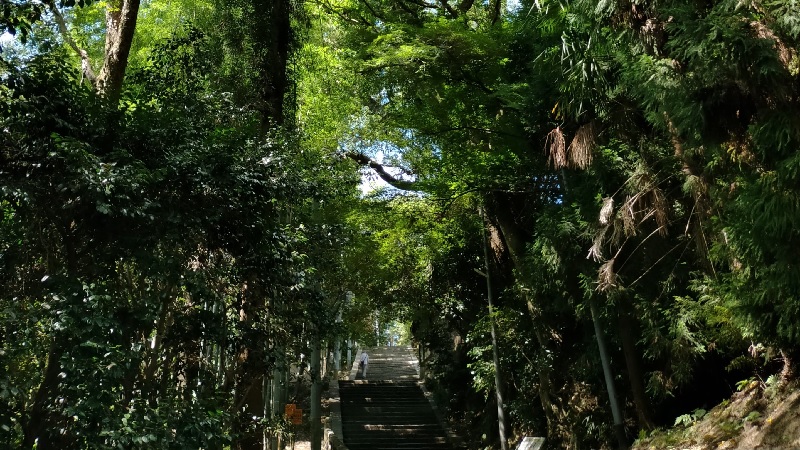
This picture is a path to the shrine. Now, people can use a cable car, but I walked this path instead. It takes almost 20 minutes. There are so many trees like maple trees, bamboo and cherry blossom on both path side. In autumn, these trees turns yellow, red and brown.
- The Edison’s monument
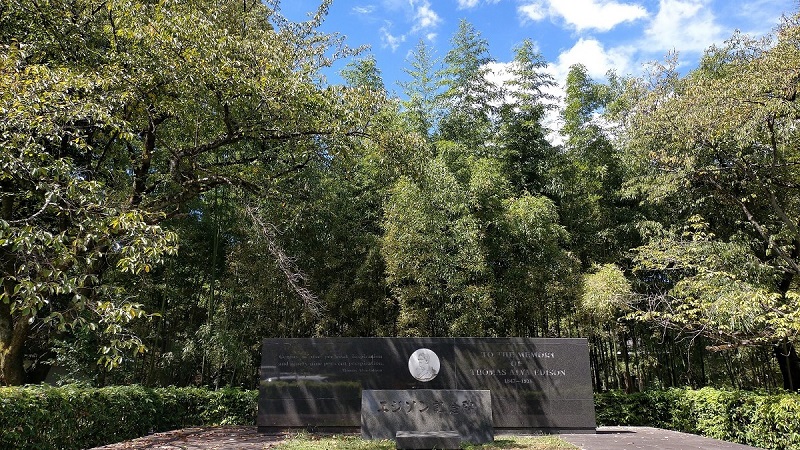
Edison invented light bulb that needed filaments. When he invented it, he sought tough filament all over the world, and he found the bamboo filament that was grow up around Mt. Otoko. In the reference, the bamboo filament worked over 1000 hours that was the longest score. This monument has built for the sake of it.
- The sacred tree
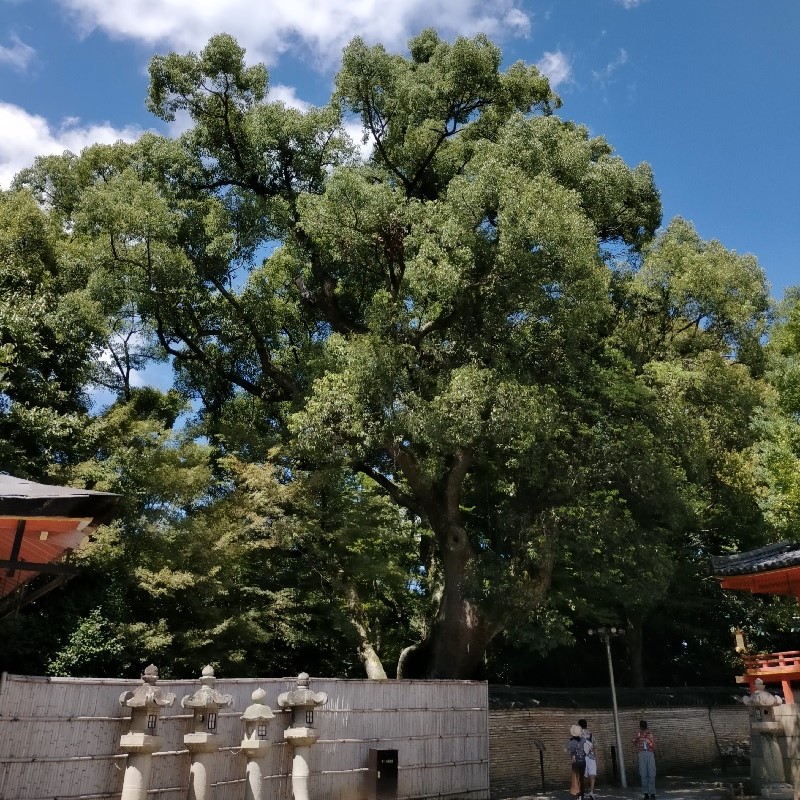
Iwashimizu hachimangu’s sacred tree is a camphor tree. This tree survives over 700 years. Kusunoki masashige planted the sacred tree. He had plenty experiences and he also had unique strategies for battles so that he won many battles in his history. He had been respected because of that reason, his brave, honor and humanity. Then, people worship the tree as a sacred tree.
- The Nobunaga-Bei (Bei means wall)
.jpg)
This wall is called Nobunaga-Bei invented by Oda Nobunaga built in 1580, early Tensho era. The wall is repeatedly layered brick and cray which is mixture of oil and soil. The wall has resistance to fire and durability. This wall surround the shrine and the longest Nobunaga-Bei remained in Japan.
- Symbol of Iwashimizu hachimangu
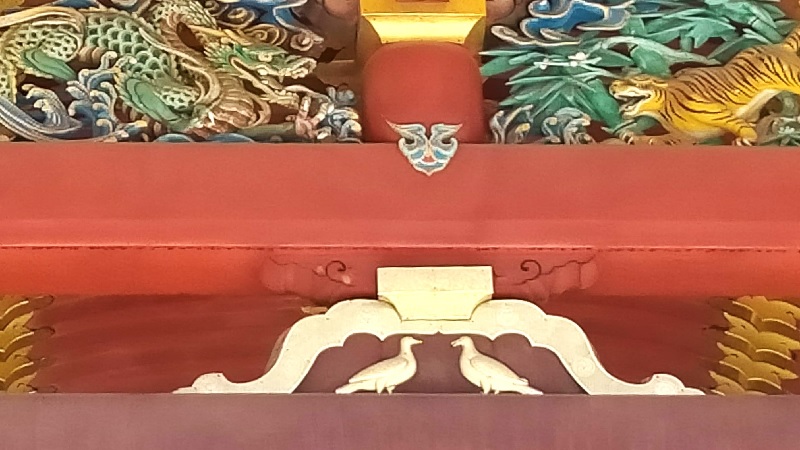
The beginning of the history, Gyokyo Osho who was a buddhist priest prayed at Usa hachimangu in Oita prefecture, and he received a message from God to build shrine. He was leaded by a pigeon to Mt. otoko. Then, Iwashimizu hachimangu was built there. For the reason, pigeons are a symbol of Iwashimizu hachimangu. There are pigeon carvings everywhere.
- View from Cable car

From the Iwashimizu hachimangu station, cable car is available. The landscape from the car is stunning. Mt. Otoko is placed in south Kyoto so close to Osaka, you can see Kyoto and Osaka basins from the cable car. Circle shaped 2 pigeons are painted on the door windows.
How is the Goshuin stamp like?
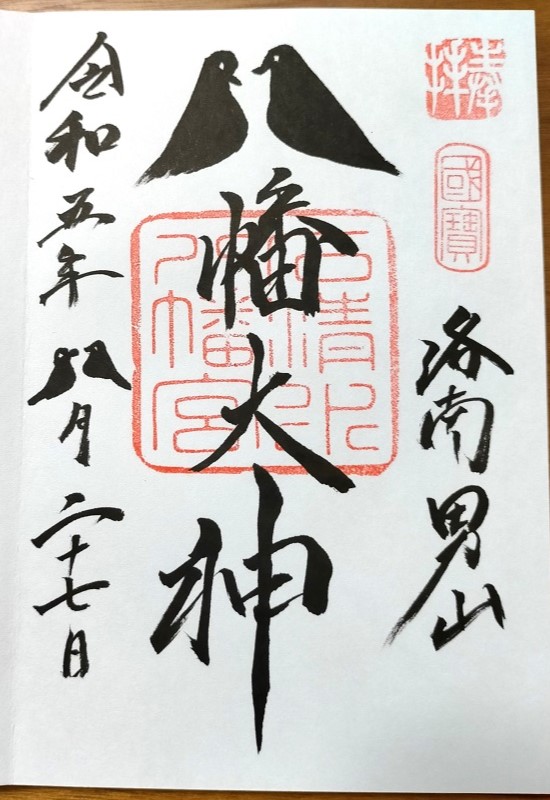
Center of the Goshuin stamp, there is the name of the shrine and top of the letters are two facing pigeons. I visited the shrine in August so that there are two pigeons in the middle on the left of it too. Depending on person, the shape of pigeons is different. If you want to have this pigeon type of goshuin stamp, you have to order.
How long does it take to see?
The way to Iwashimizu hachimangu, I walked the pathway and back to the station using cable car. It takes around 1.5 hours.
How to access?
Iwashimizu hachimangu Station (Station No. KH26) is the nearest station. Sub express and local train stop at the station.
From Kyoto station (JR line, No. JR-D01) : It takes around 40 minutes.
Kyoto Sta. (JR-D01) — JR line (Local) — Tofukuji Sta. (No. JR-D02) — walk to Keihan line — Tofukuji Sta. (No. KH36) — Keihan line (Sub, Local) — Iwashimizu hachimangu (No. KH26).
From Tofukuji Sta. to Iwashimizu Sta., every train (Sub express, Local) stops at Iwashimizu hachimangu Station.
From Kyobashi station in Osaka (Keihan line, No. KH04) : It takes around 30 minutes.
Kyobashi Sta. (No. KH04) — Keihan line (Limited) — Hirakata Sta. (No. KH21) — Keihan line (Sub, Local) — Iwashimizu hachimangu (No. KH26).
If you want to go Iwashimizu hachimangu station without changing trains, sub train is useful from Kyobashi station. It takes more time than limited express, but it stops at Iwashimizu hachimangu station instead. Limited express doesn’t stop at Iwashimizu hachimangu station.
JR line (No. H41, O08) and Keihan line (No. KH04) has Kyobashi sta., these stations are close each other. You can change lines at both Kyobashi Station.
How is the cable car like?
From the station, you can access the shrine using cable car. Using cable car takes only 5 minutes and you can save your time. It runs every 15 minutes from 8:30 to 18:15, but the first one runs at 8:10.
The Fare
For Adult : JPY. 300 (On One Way), JPY. 600 (Round Trip)
For Child : JPY. 150 (On One Way), JPY. 300 (Round Trip)
.jpg)
The cable car station from the shrine side is surrounded by trees. The way to the shrine is uphill and rough roads.
.jpg)
This cable car is named Akane. Center of it, pigeons are painted too.

